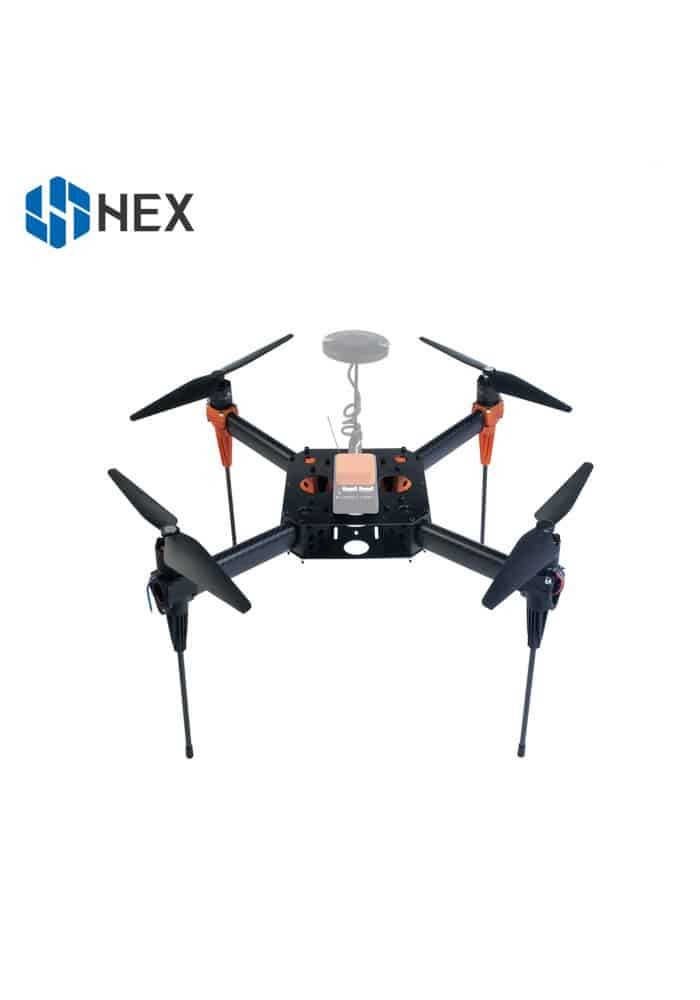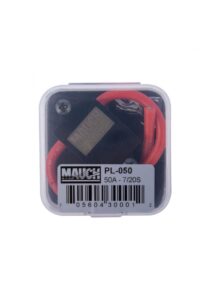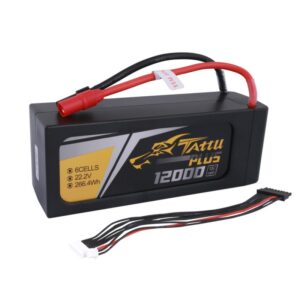
Build a drone 101

- July 30, 2021
What do you need to build a drone?
Drones involve a lot of things. They consist of a lot of parts and that can get quite complicated. Before you start building a drone make a list for yourself of the parts needed. You must have made a plan in advance. Each drone consists of different parts, but many are similar. Therefore, in this article we show you what you need to make your own drone. So you find out what a drone consists of. In this article I write about multicopters. These are drones with multiple motors.
Table of contents
1. Frame
2. Motors
3. Electronic Speed Controls (ESC)
4. Flight controller
5. Remote control
6. Propellers
7. Battery and charger
8. Tools
1. Frame
What do you need to build a drone?
Every quadcopter needs a space where you can store all the parts. It is the cover and determines the shape of the drone. You need to pay attention to the weight, size and type of material here. A frame can be made of fiberglass, carbon, aluminum or even wood. It’s just that the latter is almost unheard of. In any case, the first 3 materials are light, and that saves a lot. DJI and Blade brand drones also use plastic for protection. Cables, the battery and screws are nicely concealed by this.
We recommend the Hexsoon EDU450 to build a drone. You can expect good quality from the Hexoon brand. The frame is strong, light and easy to use. A quadcopter always has a frame with 4 arms. A hexacopter has 6 arms and an octocopter has 8.
Which one you should choose depends entirely on you. If you want to hang something heavy on it (e.g. a camera), choose a frame that has a lot of carrying capacity. In this case, think of a large Quadcopter, hexacopter or octocopter. If you want to fly faster and stunt more, use a smaller frame. A quadcopter would be the best choice in this case.
2. Motors
The motors, of course, are what make the propellers turn. Each arm of the frame should have a motor attached to it. So a drone with 4 arms (a quadcopter) needs 4 motors. There are an awful lot of motors on the market, and that quickly makes the choice difficult. You don’t want the cheapest, but also not the most expensive. An important characteristic of motors is the kV. It indicates the speed of the motor. The kV represents the number of rotations per minute the motor makes with a 1V supply.
The higher this kV value, the faster the motor rotates at a constant voltage. When you buy a motor, most websites indicate how many amps the ESC (we’ll come back to this later) should be. Often it also states how big the propeller should be approximately. This way you can match all the parts to each other. Make sure you read the description of such a separate part carefully. A motor with 1000kV could be a good start.
With motors, the balance between power and weight is very important. A larger motor with a higher kV value makes the drone have more carrying capacity. However, this makes the frame and battery heavier. Larger motors require larger propellers. This makes the frame larger. As the total weight increases, the flight time decreases. The battery has to consume more energy to keep the drone in the air. On the other hand, you do have a better motor with more power. So the trick is to keep the drone light with the best possible motor.
3. Electronic Speed Controller (ESC).
For each motor you need one Electronic Speed Controller (ESC). So a quadcopter uses 4 ESCs. They are connected directly to the battery via a cable or a power distribution board. The ESC tells the motor how hard to turn and at what time. Many ESCs come with a built-in battery eliminator circuit (BEC). This provides power to the flight controller (we’ll come back to this later) and radio receiver, without connecting it directly to the battery. The ESC is important because all the motors on the drone must run at exactly the same speed. Otherwise, the drone would have an anomaly.
In almost all cases you use an ESC with the Dshot or Proshot firmware on it. The firmware changes the number of instructions per second. Because the motors receive many more instructions, they have more control over the quadcopter’s behavior. Many companies sell ESCs with the Dshot firmware already installed.
4. Flight controller
The flight controller (the motherboard) is the brain of the drone. It contains sensors such as the gyroscope and accelerometer. They determine how fast each motor of the drone turns. The gyroscope takes care of the orientation of the drone. Furthermore, the flight controller takes care of picking up the signal from the controller. This mini computer system keeps the drone flying stably and executing instructions. Flight controllers can be very complex, but also very simple.
A good flight controller to build a drone with is The Cube Orange Standard Set. It is easy to set up and has good features. You can use it for almost any multicopter. If you want to upgrade to a hexacopter or an octocopter later, that shouldn’t be a problem. It can even be used on rovers, planes and submarines. The Cube orange set also has an integrated ADS-B receiever. allowing the user to see other aircraft nearby.
5. Remote Control
With the radio transmitter and the receiver you can control the drone. Again, there are endless options for this. Make sure you pay attention to how many channels the receiver should have. In the description of the product you can often read what is needed. I recommend that you buy a controller with at least 8 channels. This will allow you to upgrade later in the future.
The remote control makes contact with the receiver on the drone via the 2.4Ghz or 5.8Gh frequency. This frequency is exempted for model flying in almost all countries, which is why most controllers use it. 2.4Ghz is the favorite for controlling the drone. The 5.8Ghz is used for transmitting the video images. We offer the Here Link, it is an advanced remote, data link, telemetry, an HD Video link all in one. Works perfectly with The Cube orange standard set.
6. Propellers
Each ‘arm’ of the frame has a motor. On that motor, of course, belongs a propeller. So a quadcopter has 4 and a hexacopter 6 propellers. On a quadcopter you have 2 propellers (the pusher) that turn clockwise. Furthermore, you have 2 propellers that turn counterclockwise. The propellers that turn clockwise often have the letter ‘R’ on them. Propellers also come in different shapes and sizes. Larger propellers provide more carrying capacity, but also make the drone heavier. Which type of propeller you use depends on the type of motor and frame you are using.
Furthermore, it is important to understand the size of the propeller. The size of a propeller is often referred to as ”14×9.” These sizes are expressed in inches (1 inch = 2.54 cm). The first number represents the diameter of the propeller. This means the total length from one end of the propeller to the other. The second number represents the “pitch” of the propeller. This indicates how far the drone goes in the air per revolution of the motor. However, this value is not/nearly used, so again you can forget it. Most people only talk about the length measurement of a propeller, or diameter.
Most propellers are made of nylon. It’s cheap material and light too. For better quality, you can also buy propellers made of carbon. They are a lot lighter, but also a lot more expensive. Propellers can generally be replaced quite easily.
Always make sure you take an extra set of propellers with you. Even if your propeller is only slightly damaged, this has a big impact on the flight performance. Your drone will fly a lot less stable. Since propellers are pretty cheap and easy to replace, it’s better to buy extra of them.
7. Battery and charger
The battery acts as the power source for the drone. A drone battery is in most cases a LiPo battery. These are rechargeable batteries that you can use more often. Again, you will need to find the best balance. A larger battery provides a longer flight time, but is also heavier. This in turn brings down the flight time. In general, doubling the power improves the flight time by 50%. And then we assume that the drone can hold this extra weight.
LiPo batteries have a C rating and a power rating expressed in mAh (milliamps). The power in mAh indicates how much current the battery can supply. The higher this power, the more powerful the battery. The more powerful the battery, the longer you can fly. The C rating shows the speed at which power can be drawn from the drone. The number ‘C’ stands for the number of times the capacity a battery is allowed to deliver as a continuous current. So 10C means 10 times the capacity.
So a 3000mAh battery with a 10C rating is allowed to supply 30 000mAh continuously. This is 30A (because 1000mAh is 1 Ampere). On a battery you often see the letter ‘S’. For example, it says: 4S LiPo battery. This is a battery with 4 cells. If you are smart you take several batteries with you. The more expensive drones can fly for up to 35 minutes. If you build your own drone you probably won’t be able to fly longer than 10 minutes, but of course that depends on your own building skills. In any case, multiple batteries can never hurt.
Charging LiPo batteries can be quite complex. This is because these batteries have multiple cells. These cells must be charged and discharged at exactly the same rate. To make sure this goes well you need a good charger. There are plenty of chargers that can do this, but beware of cheap alternatives. LiPo batteries are highly flammable and can explode quickly. This is precisely why it is important to charge them properly. Many people charge these types of batteries outdoors. You can also buy a LiPo safebag. In this your battery is also safely stored. These are required to be used when traveling by plane.
8. Tools need to build a drone
Finally, of course, you’ll need tools. Chances are you will need the following:
Soldering iron: to construct the electrical circuit between the parts.
Small screwdrivers
Allen wrenches
Pliers and wrenches
Glue gun
Tyraps
So-called “kits” can be a good alternative. Drone kits are packages of individual parts that belong together. So you don’t have to figure out if the parts work with each other. In general, it is cheaper than buying all the parts separately. However, the parts often come from the same supplier. This makes it harder to upgrade. You have a lot less choice than if you would order and use all the parts separately.
The cube orange runs on Ardupilot or PX4 firmware. Ardupilot is an extensive community where all information on how to build a drone and the firmware are published. make sure to check it out!







